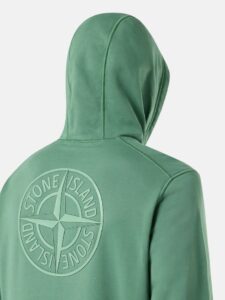Shoe Box Size Guide: Dimensions for All Your Needs
When it comes to storing, shipping, or displaying footwear, selecting the right shoe box size is crucial. The dimensions of a shoe box can vary depending on the type of shoe, brand, and intended purpose, such as retail display or shipping. This guide explores standard shoe box dimensions, how they differ for various shoe types, and the considerations for specific brands like Nike.
Understanding Shoe Box Dimensions
Shoe box dimensions are typically measured in inches or centimeters, including the length, width, and height. The size of the box directly depends on the type of shoe it is designed to hold. For example, children’s shoes require smaller boxes, while boots need significantly larger ones.
Retailers and manufacturers standardize their shoe box sizes to simplify logistics and improve storage efficiency. However, variations still exist across different brands and shoe types.
Standard Shoe Box Sizes
While there is no universal standard for shoe box dimensions, the following measurements are commonly used:
- Men’s shoes: Boxes for men’s footwear typically measure around 14 x 10 x 5 inches. This size accommodates most sneakers, dress shoes, and casual footwear.
- Women’s shoes: Women’s shoe boxes are slightly smaller, averaging 13 x 8 x 4 inches. They are designed for heels, flats, or lightweight sneakers.
- Children’s shoes: For kids, shoe boxes are even smaller, usually 10 x 7 x 3 inches. These boxes cater to tiny shoes while ensuring efficient storage.
These dimensions are approximate and can vary based on the brand and design of the footwear.
Shoe Box Dimensions for Shipping
When choosing shoe box dimensions for shipping, it’s essential to consider both protection and efficiency. The box should provide enough room to prevent the shoes from being squished or damaged during transit, but it shouldn’t be so large that it increases shipping costs unnecessarily.
Most shipping companies recommend packaging that minimizes empty space while maintaining structural integrity. A popular choice for shipping shoes is a corrugated cardboard box with dimensions slightly larger than the original shoe box, such as 15 x 11 x 6 inches.
Factors to Consider When Selecting Shoe Box Sizes
Type of Shoes
Shoes come in a variety of shapes and sizes, from bulky boots to slim sandals. The type of shoe directly influences the box size required. Always consider the dimensions of the footwear before selecting a box.
Storage Space
Efficient use of storage space is another important factor. For retail settings, stackable and uniform shoe box sizes help maximize storage areas.
Material and Durability
The material of the shoe box also plays a role. Cardboard boxes are lightweight and cost-effective for general use, while rigid boxes are preferred for luxury footwear due to their sturdiness and aesthetic appeal.
Brand Requirements
Brands like Nike, Adidas, and others have their own sizing standards for shoe boxes, which makes them recognizable and practical for their specific footwear lines.
Shipping Needs
For e-commerce businesses, shipping shoe boxes that align with standard courier sizes helps reduce costs and ensures safer transportation of goods.
Tips for Customizing Shoe Boxes
Customizing shoe boxes is an excellent way to enhance branding, improve customer experience, and ensure practicality. When customizing:
- Opt for eco-friendly materials like recycled cardboard.
- Include branding elements such as logos and unique designs.
- Use appropriate dimensions to match the type of shoes and shipping requirements.
Why Shoe Box Dimensions Matter
Selecting the right shoe box dimensions not only protects the footwear but also enhances the presentation. Proper sizing reduces material waste and shipping expenses while improving the customer’s unboxing experience. Additionally, well-designed packaging boxes can leave a lasting impression on buyers, especially for premium or luxury products.
In conclusion, understanding shoe box dimensions is essential for businesses and individuals involved in footwear packaging. Whether you’re dealing with standard shoe box sizes, shipping requirements, or Nike shoebox dimensions, choosing the right size can make a significant difference in functionality and customer satisfaction.













Post Comment